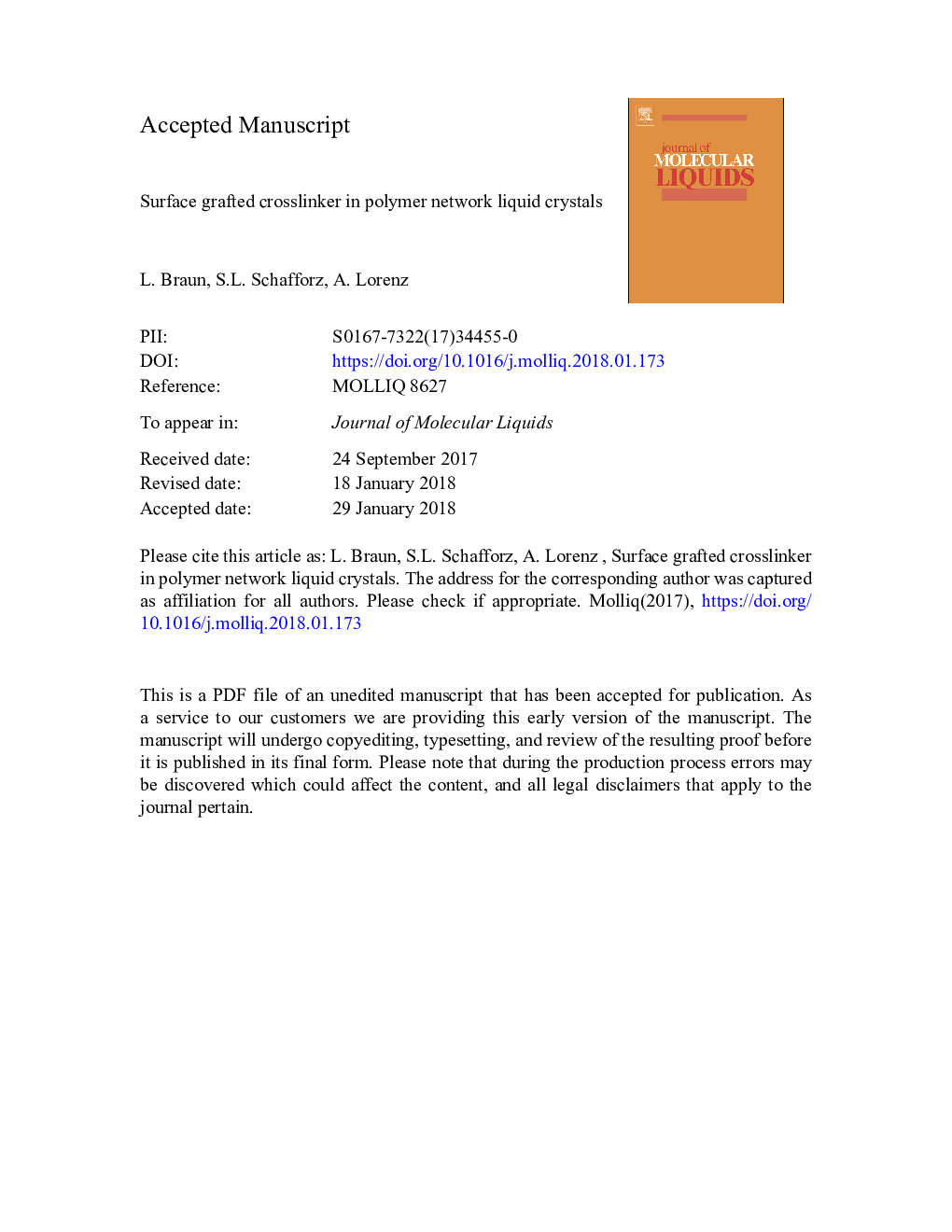| Article ID | Journal | Published Year | Pages | File Type |
|---|---|---|---|---|
| 11015906 | Journal of Molecular Liquids | 2018 | 15 Pages |
Abstract
The surfaces of indium tin oxide coated glass substrates were functionalized with a surface grafted, covalently bound photoinitiator. These surface functionalized substrates were used to assemble liquid crystal (LC) test cells. The LC test cells obtained were filled with reactive mixtures of a nematic LC doped with reactive mesogens (acrylate monomers). First, the anchoring properties of the surface-grafted photoinitiator were investigated. Next, the test cells were exposed to UV light in order to in-situ generates a surface grafted polymer network LC with enhanced electro-optic responses. The surface grafted photoinitiator (benozophenonesilane) had two functional groups separated by an aliphatic spacer: Benozophenonesilane possess one chlorosilane functional group for covalent attachment to surface hydroxyl groups (present at the substrate surface). The second functional group was a benzophenone functional group, suitable to initiate photopolymerization of acrylate monomers. As host LC, the nematic LC E7 was used. Samples doped with two different reactive mesogens (RM257 and BAB6) were investigated. The electro-optic response properties of samples were investigated before and after exposure to UV light. As reference samples, a conventional polymer network LC was generated with a dissolved photoinitiator and investigated in test cells assembled with non-surface functionalized substrates. In contrast to a conventional polymer network LC, the polymer network was surface grafted to the substrates if benzophenone silane was used as photoinitiators (where these molecules acted as crosslinker between polymer and substrate). It was clearly shown that test cells with benzophenone silane coated surfaces were suitable to generate a polymer network LC: The presence of a surface grafted polymer network led to desirably fast electro-optic responses.
Related Topics
Physical Sciences and Engineering
Chemistry
Physical and Theoretical Chemistry
Authors
L. Braun, S.L. Schafforz, A. Lorenz,
